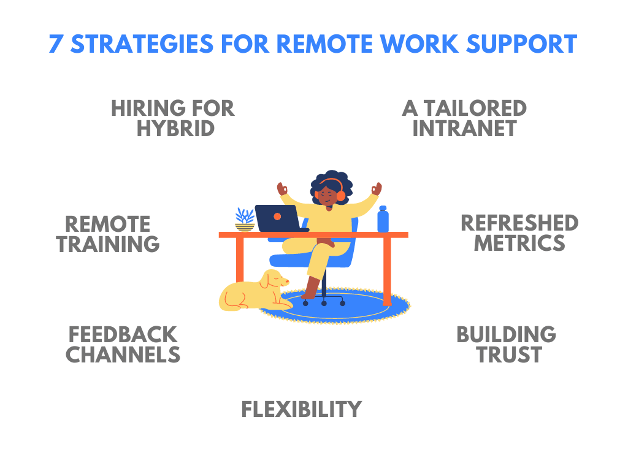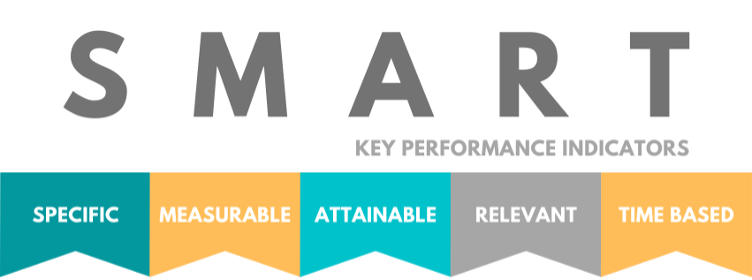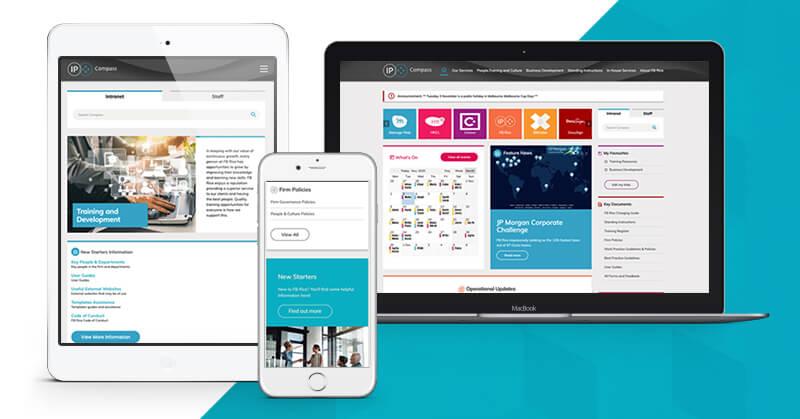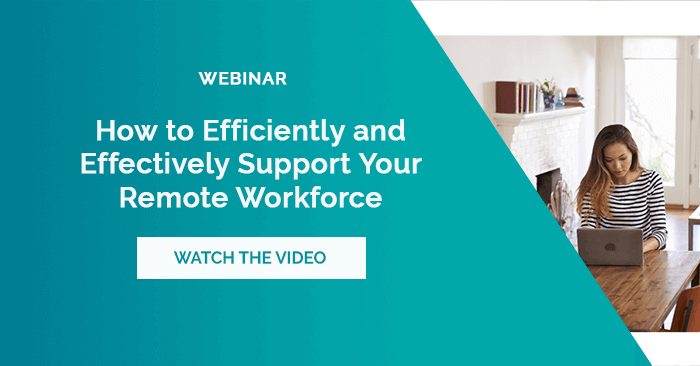Do you provide specific support for your remote workforce?
We know that remote and hybrid working is here to stay thanks to the pandemic as well as wider social changes, but one question we hear over and over from business leaders is how to most effectively manage a remote workforce.
On the upside, remote employees are more engaged, more likely to stay with their employer and enjoy a better work-life balance when they have the chance to work from home – but they can also find collaboration, communication and motivation difficult. Those working from decentralised locations and away from the office may also experience similar remote work barriers.
These seven key strategies cover essential aspects for a better-supported and better-connected remote workforce in 2024.

1. Get the Right Communication and Collaboration Systems in Place
A DocuSign survey of 2,008 office workers around Australia found that just 32% feel more connected to their colleagues when they’re working from home compared to the office. If you haven’t already, it’s time to focus on your intranet communication software so remote workers feel better connected. In this new hybrid workforce era, being able to easily collaborate and communicate benefits everyone – whether they’re fully remote, working full-time in the office or a mixture of both.
The right intranet solution can replicate real-world collaboration environments for remote workers, via project and topic-based work spaces.

2. Revisit Your Performance Metrics
Key Performance Indicators are a highly effective way to measure individual and organisational performance, but these may not be as relevant if the team or individual has made a recent shift to remote work. Refreshed metrics can better reflect how successfully people are really working at home. They’ll also help to set clear expectations for employees, so they know exactly what’s expected of them.
Consider setting some wider KPIs focused around communication and self-discipline to set the foundation for successful remote work, as well as reconsidering the KPIs relating to the individual’s role. Remember that KPIs should be SMART: specific, measurable, attainable and time-based.

3. Focus on Flexibility for Staff
Remote work has provided several benefits: in a Salesforce survey, 66% say remote working has brought them closer to their families. Employees say they’ve enjoyed a better work-life balance working from home, but this balance can also require a more open-minded approach to when and where employees might be working. After all – if the job’s getting done and done right, does it matter if an employee wants to split their workday into early morning and evening work sessions?
There’s been somewhat of a shift occurring in the employment landscape where 76% of Australians are willing to stay longer with their employer if they offer flexible working conditions, and over half are willing to take a pay cut for an more flexible working schedule. Organisations that fail to keep up with this shift could really find themselves on the back foot when it comes to hiring, so keep this in mind when developing support for remote workers.
4. Build a Sense of Trust for Remote Teams
An effective digital workplace also requires a healthy sense of trust, both from leadership and amongst remote teams. The instinct might initially be to put employee monitoring software and keyboard tracking into place – but for the most, part Big Brother doesn’t need to be watching over remote staff. Instead, develop those important performance metrics and focus on fostering high employee trust and engagement, which can have profound benefits for employee loyalty and productivity.
Some ways of fostering trust in your remote teams can include:
- Setting expectations
By providing clear objectives daily on each employee’s personalised dashboard, on both an individual and organisational level
- Encouraging collaboration & accountability
By building virtual workspaces around projects and topics so workers can work together easily and in a shared setting
- Leading by example
By maintaining a virtual presence from key leadership via video messages and comments, to maintain motivation and celebrate wins
- Unwinding together
By celebrating special days and events on video chat or your intranet noticeboard
- Touching base regularly
By checking in with teams daily or weekly, depending on how experienced the team is with remote work.

We developed a new intranet for leading intellectual property firm FB Rice that compiles useful team information such as staff codes, photos and whether someone is out of the office at that time. These types of features, as well as the ability to share and celebrate organisational successes, has helped to connect staff working from different offices and from home.
5. Hire with Hybrid in Mind
One of the brilliant aspects about a remote or hybrid workforce is that your recruitment pool opens up to far beyond that of the local area – there’s literally a world of expertise and skillsets out there to be found! Plenty of organisations are taking the chance to build up a diverse talent pool with a focus on technology skills, which not only supports existing staff but benefits the organisation as a whole. Just remember that:
- The right intranet communication software is essential so your new talent won’t be sitting idly by.
- Virtual hiring capabilities may be an important consideration to help you hire effectively from afar.
- A Learning Management System (LMS) can help train new hires and get them up to speed efficiently.
6. Invest in Remote Training
While we’re on the subject of training, it’s worth noting that an effective LMS can benefit your entire team as well as new hires. The right intranet design with inbuilt LMS can provide a training hub for everything from onboarding to ongoing professional development and upskilling.
Employees working from home can sometimes feel like their career is on pause – but this doesn’t need to be the case with a specific remote learning and development strategy in place.
Remote employees are able to work through courses at their own pace, easily find related resources and access relevant staff details for any one-on-one questions about what they’re learning. This type of effective remote learning can truly help to future-proof your workforce, whether remote working is part of your short-term or long-term plans.
7. Build Reliable Feedback Channels
Gathering regular feedback from employees is critical when they’re working from home or from decentralised locations, because even small problems can quietly snowball if they’re not addressed in a timely way. Consider asking your remote workers what could make their workday easier and more productive. For example:
- Would mid-morning meetings suit some people so they can pick their kids up from school?
- Would certain teams prefer to block out several hours a day for high-focus work?
- Could certain forms or HR processes be automated to save time and improve accuracy?
By requesting this type of information via intranet surveys or a digital “suggestion box”, you could identify important insights to boost remote employee engagement and productivity.
For further tips on supporting your remote workers, why not grab a coffee and watch our webinar on this subject? It covers the key areas you mustn’t overlook when setting up your digital workplace, as well as important long-term strategies.

If you’re currently looking to improve or overhaul your intranet communication software, Elcom offers the proven platform and specialist team to build your truly connected digital workplace. Schedule your free consultation today.